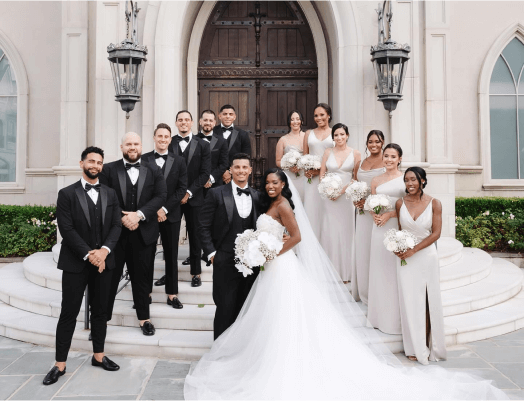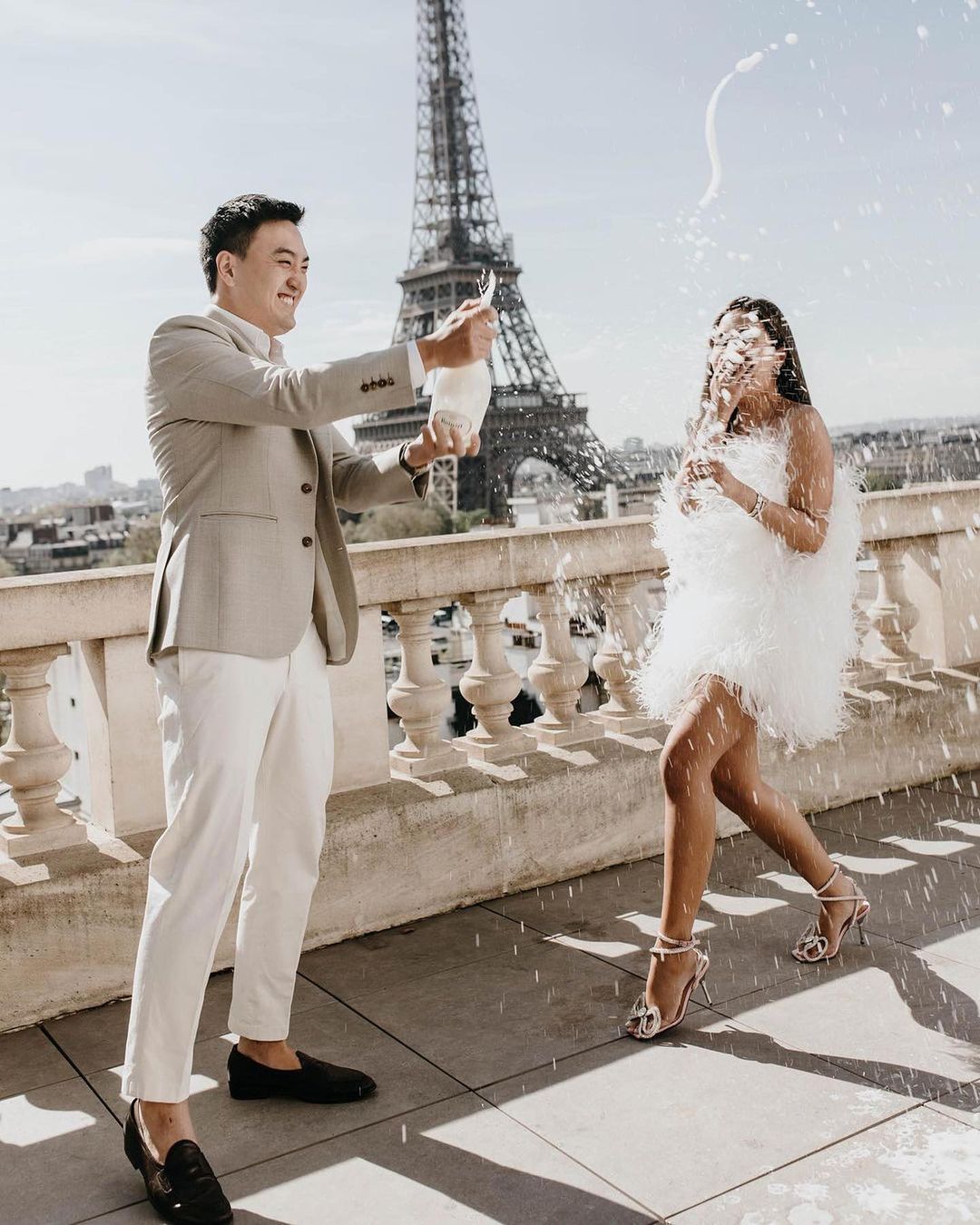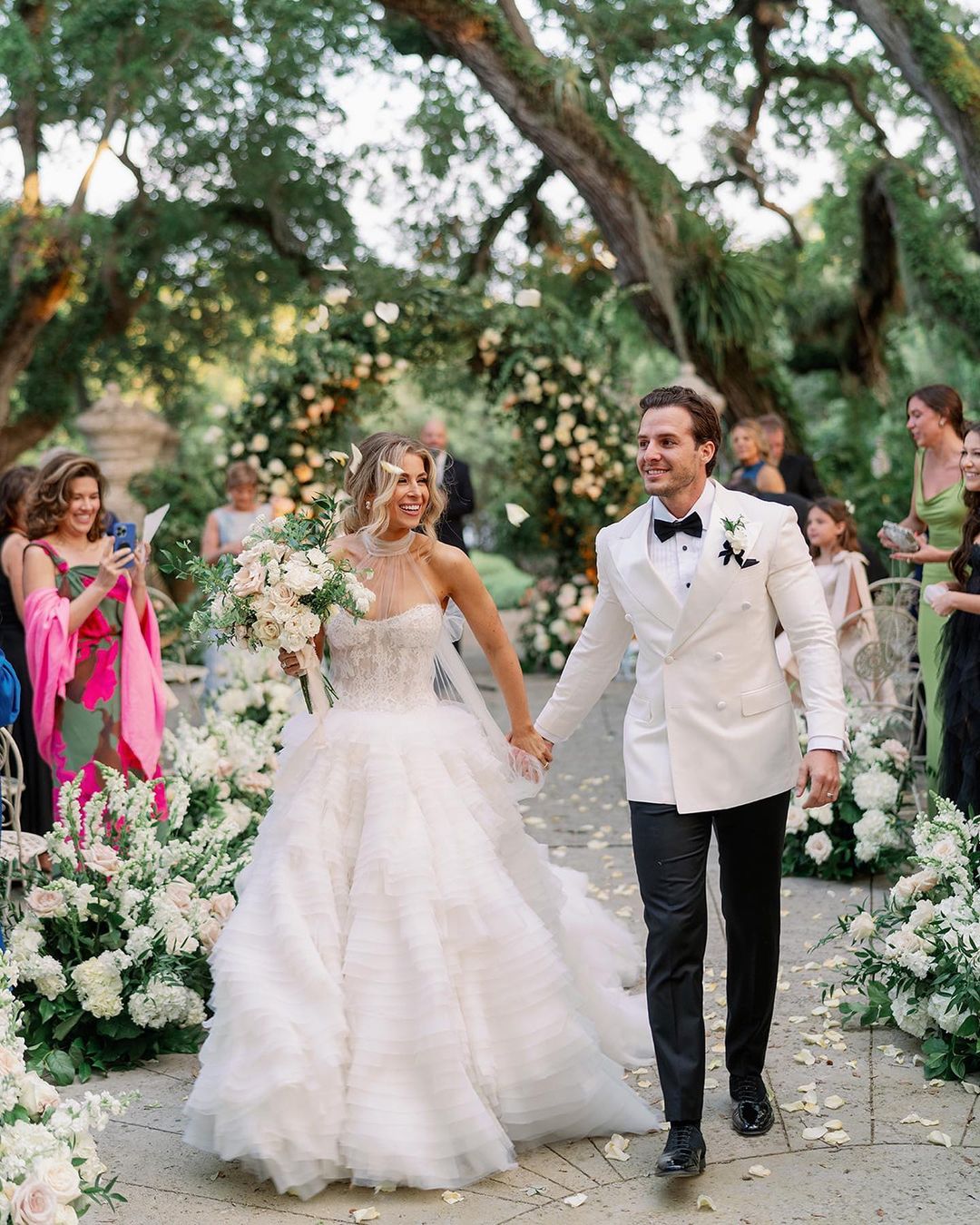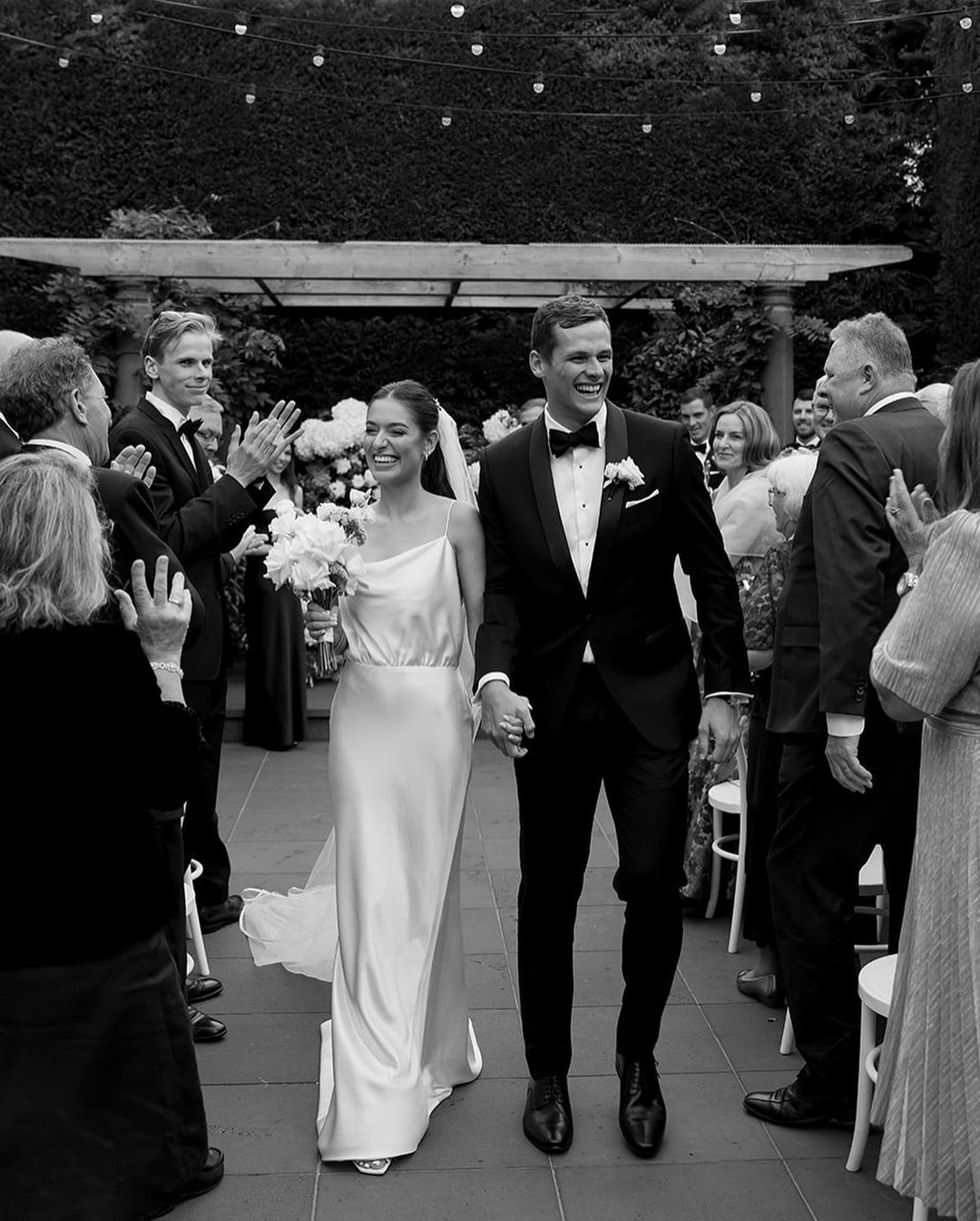What's the Traditional Wedding Processional Order?
- Author: Natali Grace Levine
- Reading time: 8 min 2 sec
- Publication date: 05/23/2023
- Updated: 01/24/2025
- What Is A Processional In A Wedding
- How Long Does The Wedding Processional Usually Take
- Christian Wedding Processional Order
- Catholic Wedding Ceremony Walking Order
- Jewish Order Of Wedding Ceremony Walk
- Hindu Processional Order For Wedding Ceremony
- Modern Wedding Processional Order
- Wedding Processional FAQs
Hey there, are you planning your dream wedding? Well, you might be wondering what the traditional wedding processional order is. Don't worry, you're not alone. Many couples get confused about who should walk down the aisle first, second, or last.
Think of the wedding processional as a carefully choreographed dance, with each person playing their part to create a beautiful and meaningful ceremony. From the flower girl to the bride, every member of the wedding party has a special role to play in the procession.
Find Your Perfect Wedding Vendors
What Is A Processional In A Wedding
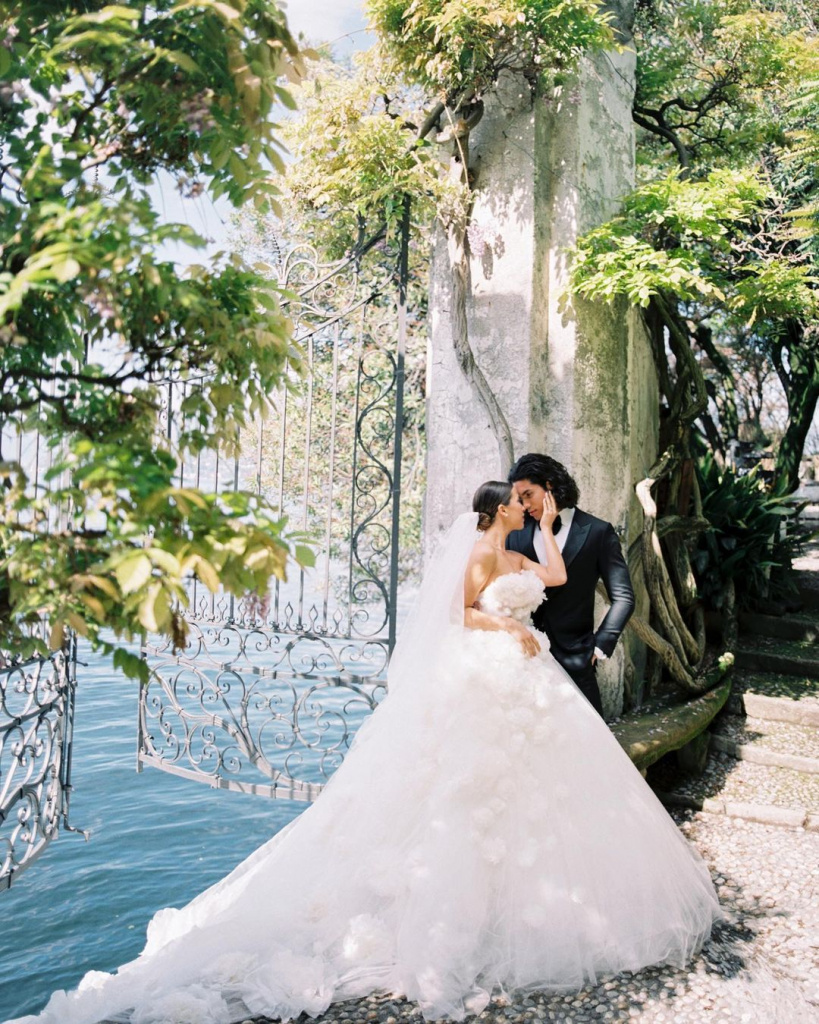
Ah, the wedding processional. It's that magical moment when the bride makes her grand entrance and all eyes are on her (and let's be real, we're all secretly hoping for a tear-jerking moment or two). But what exactly is a wedding processional, you ask? Well, it's part of the wedding ceremony where the bridal party and the bride enter the ceremony space and walk down the aisle. It's like a parade, but way more romantic and with a lot less confetti.
A wedding procession is a time-honored tradition that dates back centuries, symbolizing the joining of two families and the start of a new chapter. This is an opportunity for everyone to take deep breaths, wipe away tears, and bask in the moment's beauty. However, it isn't all about the bride. A wedding party entrance is also a time to show off their fancy clothes. Everyone gets their moment in the spotlight, from the dapper groomsmen to the adorable flower girl. It's the perfect chance to create a magical moment for your guests that they'll never forget.
How Long Does The Wedding Processional Usually Take
The length of a processional can vary depending on a few factors, such as the size of the wedding party and the length of the aisle. Typically, a wedding procession can take anywhere from 5 to 15 minutes.
The length of the aisle plays a big role in determining how long the processional will take. If you're getting married in a large cathedral with a long aisle, it will naturally take longer for everyone to walk down it. On the other hand, if you're getting married in a more intimate venue with a shorter aisle, the processional will be shorter.
Another factor to consider is the size of the wedding party. If you have a large bridal party with many bridesmaids and groomsmen, the processional will take longer as everyone walks down the aisle in pairs. However, if you have a smaller wedding party, the processional will be shorter.
Christian Wedding Processional Order
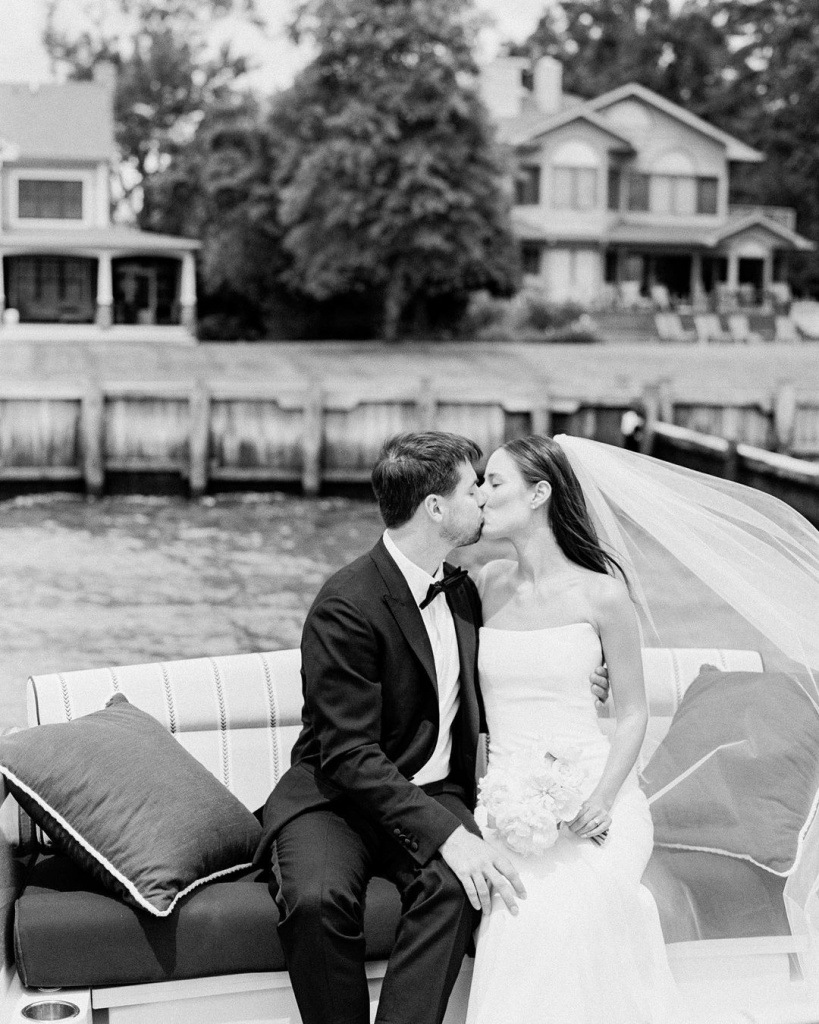
Alrighty, let's talk about the Christian wedding processional order. If you're planning a Christian wedding, you'll want to make sure you get this right so that everything runs smoothly on the big day.
Seating of the guests: Guests are seated before the processional begins.
- Entrance of the wedding party: The wedding party typically enters in pairs, starting with the groomsmen followed by the bridesmaids. The pairs may enter simultaneously or one pair at a time.
- Entrance of the best man and maid of honor: The best man and maid of honor can either enter together or separately, depending on the couple's preferences.
- Entrance of the groom: The groom enters next, usually accompanied by his parents.
- Entrance of the ring bearer and flower girl: The ring bearer and flower girl can either enter together or separately, depending on the couple's preferences.
- Entrance of the bride: The moment we've all been waiting for - the bride's big entrance! The father of the bride usually walks her down the aisle, but some brides choose to walk alone or with a family member or friend.
- The ceremony begins: Once the bride has made it to the front of the ceremony space, the officiant will welcome everyone and the ceremony begins.
Now, keep in mind that the Christian wedding processional order can vary depending on the couple's preferences and the specific church traditions. So if you want to mix things up and switch the order around, go for it!
Catholic Wedding Ceremony Walking Order
The Catholic wedding processional order is similar to the Christian one, but there are a few key differences.
- Seating of the guests: Guests are seated before the processional begins.
- Entrance of the wedding party.
- Entrance of the best man and maid of honor.
- Entrance of the priest and/or other religious officials: The priest, deacon, or other religious officials involved in the ceremony may enter before or after the wedding party, depending on the specific church traditions.
- Entrance of the groom: The groom enters next, usually accompanied by his parents.
- Entrance of the ring bearer and flower girl.
- Entrance of the bride: Traditionally, the father of the bride escorts her down the aisle, but some brides opt to walk solo or with a loved one of their choice.
- The ceremony begins: Once the bride has made it to the front of the church, the couple may perform a few Catholic wedding traditions, such as the lighting of a unity candle or the presentation of flowers to the Virgin Mary. The officiant will then welcome everyone and the ceremony begins.
Jewish Order Of Wedding Ceremony Walk
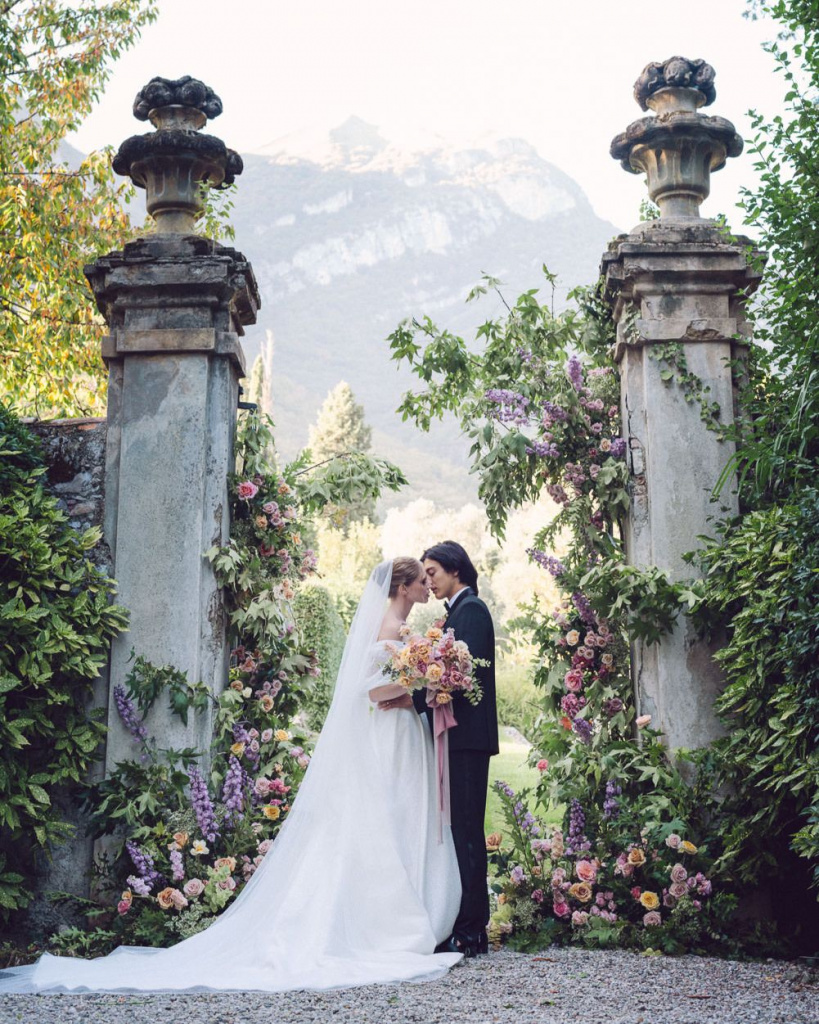
Mazel tov! The processional is a beautiful and meaningful tradition that symbolizes the union of two families and the start of a new chapter in the couple's lives. The Jewish wedding processional typically begins with the arrival of the ketubah, a Jewish marriage contract that is signed by the couple and their witnesses. Once the ketubah has been signed, the music starts and the wedding party makes their entrance.
The wedding processional in a Jewish wedding is typically a bit different from the processional in other types of weddings. Here's a breakdown of the traditional Jewish order of processional for weddings:
- Seating of the guests: Guests are typically seated before the processional begins.
- Entrance of the rabbi and the groom: The rabbi and the groom typically enter together and take their places at the front of the ceremony space.
- Entrance of the parents: The parents of the bride and groom usually enter next, sometimes escorted by the ushers.
- Entrance of the bridal party: The bridal party typically enters in pairs, starting with the groomsmen followed by the bridesmaids.
- Entrance of the bride: The bride usually enters last, escorted by her parents. As the bride walks down the aisle, guests may toss small candies or nuts, known as "mazel tov" favors, to wish the couple good luck.
Once the bride has made it to the front of the ceremony space, the couple will typically perform the traditional Jewish wedding ceremony, which includes the exchange of rings, the recitation of the Sheva Brachot, and the breaking of the glass.
Hindu Processional Order For Wedding Ceremony
The Hindu wedding processional is a beautiful and colorful tradition that celebrates the union of two individuals and their families. It’s different from other wedding ceremony orders of the entrance because it typically involves a Baraat, a groom's wedding procession that can include horses, elephants, or even sports cars.
Here is a detailed plan of the traditional Hindu wedding processional order:
- Seating of the guests.
- Entrance of the Baraat: The Baraat is the groom's wedding procession, which typically includes the groom, his family members, and his friends. The Baraat may arrive on horses, elephants, or other animals, or in modern times, in cars.
- Entrance of the groom: The groom typically enters the ceremony space on a decorated horse, elephant, or car, accompanied by his family and friends.
- Entrance of the bride's family: The bride's family typically enters next, sometimes escorted by the groom's family or ushers.
- Entrance of the bride: The bride enters last, accompanied by her family and friends. In some traditions, the bride may be carried in a decorated palanquin or carried by her brothers.
- The ceremony begins: Once the bride and groom are seated in the ceremony space, the officiant will welcome everyone and the ceremony begins. The ceremony may include the exchange of garlands, the tying of the mangalsutra (a necklace symbolizing the union of the couple), and the seven vows taken around the sacred fire.
Some couples may choose to include additional elements in the processional, such as the lighting of lamps or the showering of flowers.
Modern Wedding Processional Order
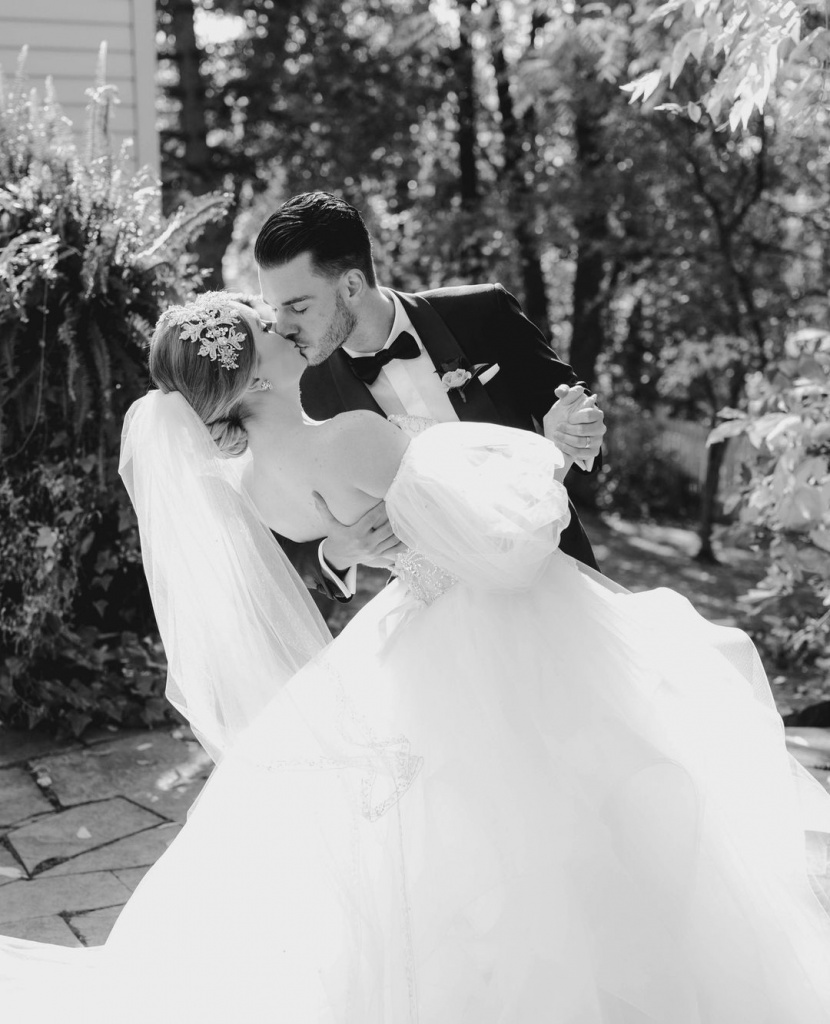
The modern wedding processional can differ from traditional wedding processional orders in a variety of ways. It may be influenced by the couple's personal beliefs, cultural backgrounds, or their own unique style. Some couples may also choose to incorporate non-traditional elements, such as unique music choices or unconventional seating arrangements.
However, here is the typical order of walking down the aisle:
- Seating of the guests.
- Entrance of the wedding party: The wedding party may enter in pairs or individually, with different members of the party entering to different songs.
- Entrance of the groom: The groom usually enters next, sometimes accompanied by his parents or with the best man.
- Entrance of the parents: The parents of the bride and groom may enter together or separately, depending on the couple's preferences.
- Entrance of the bridesmaids.
- Entrance of the maid of honor.
- Entrance of the flower girl and/or ring bearer.
- Entrance of the bride.
The modern wedding processional order is open to interpretation, and many couples choose to personalize it to their own unique taste and style.
Wedding Processional FAQs
- Who walks the groom down the aisle?
- Who walks the mother of the bride down the aisle?
- Who walks down the aisle first?
- Does the groom walk down the aisle?
- Who walks the bride down the aisle?
- When Does The Ring Bearer Walk Down The Aisle?
- How Long For 9 Bridesmaids To Walk Down The Aisle?
In a traditional Western-style wedding, the groom usually does not get escorted down the aisle. However, in some cases, the groom may be escorted by his parents, especially if they want to symbolize their support for him. Alternatively, the groom may choose to walk down the aisle with another family member or friend. Ultimately, the decision is up to the groom and his family, and they can choose to include or exclude this tradition as they see fit.
Traditionally, in a Western-style wedding, the mother of the bride is accompanied down the aisle by an usher or a family member, like a son or a brother. However, the mother of the bride may also choose to walk alone or with a friend. This moment is meant to honor and celebrate the mother of the bride before the ceremony officially begins.
Usually, the wedding party walks down the aisle first, followed by the entrance of the bride. The wedding party may include the groomsmen, bridesmaids, flower girls, and ring bearers.
There is usually no walk down the aisle for the groom. He stands at the front of the ceremony space until the wedding party and bride make their entrances, typically next to the officiant. However, some couples may choose to include the groom in the processional and have him walk down the aisle with his parents or other family members.
The bride is usually accompanied down the aisle by her father. Some brides, however, may prefer to be led down the aisle by a different family member or friend, or they may choose to walk down the aisle alone. In recent years, brides have been accompanied down the aisle by both parents, step-parents, or a combination of family members or acquaintances.
The moment at which the ring bearer makes their entrance down the aisle is subject to variation, based upon the couple's preferences and specific wedding ceremony traditions. In a traditional Western-style wedding, it is customary for the ring bearer to walk down the aisle after the groomsmen and bridesmaids, but prior to the entrance of the flower girl and the bride.
It can depend on a few things like how long the aisle is, how fast they walk, and the tempo of the music. But, typically it takes around 5-7 minutes for them to walk down the aisle, assuming they're walking at a decent pace.







